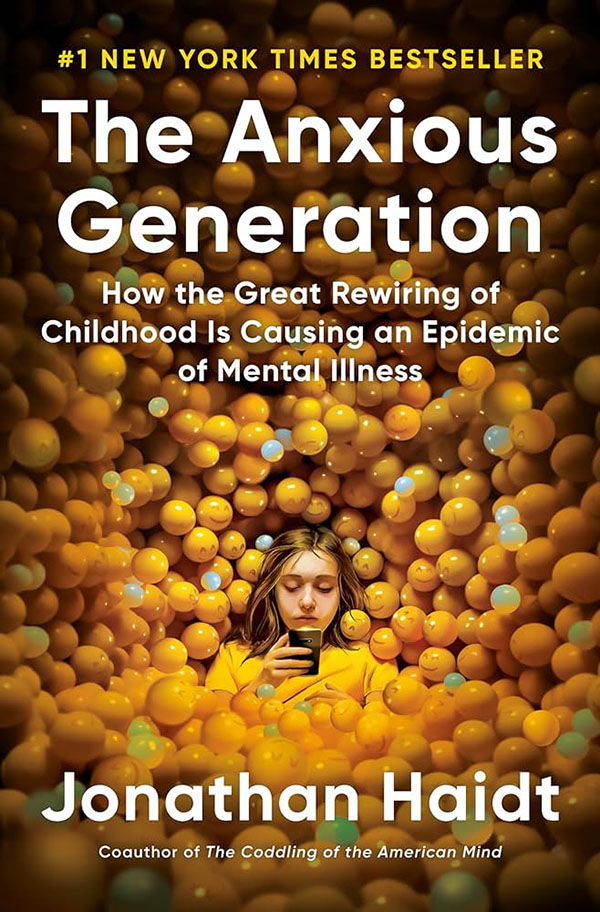
Review of The Anxious Generation: How the Great Rewiring of Childhood is Causing an Epidemic of Mental Illness
Haidt, Jonathan.The Anxious Generation: How the Great Rewiring of Childhood is Causing an Epidemic of Mental Illness.New York: Penguin Press, 2024. 384 pages. $30.00 hardback. ISBN978-0593655030
Last summer my twenty-year-old daughter was prescribed Lexapro to manage her anxiety. A few days later while talking with some of her college girlfriends about an upcoming event, one confessed to being worried about it. Another agreed and replied, “Lexapro saving my life right now.” Then another spoke up, “No way! I take that too!” Before the conversation was over, at least five of the friends admitted that they took medication to control their anxiety. My daughter was relieved to hear that she wasn’t alone, but I was surprised that so many of her contemporaries were struggling with mental health. Jonathan Haidt wouldn’t be surprised at all though.
Haidt’s new book,The Anxious Generation: How the Great Rewiring of Childhood is Causing and Epidemic of Mental Illnessargues that as smart phone use increased after 2010, “childhood was rewired” and “adolescents became more anxious, depressed, and fragile” (p. 65). This new book extends conversations that began in his 2018 book and forthcoming documentary (Oct. 2024)The Coddling of the American Mind written with Greg Lukianoff. Haidt begins the new book by illustrating the recent surge in mental illness among young people. Then he outlines some basic child development principles emphasizing the necessity of play. He especially argues for the importance of risky play and the need to test boundaries in order to learn self-regulation. Haidt notes that just as smart phones were introduced, parents were also ramping up efforts to keep children physically safe. The problem he points out is that parents are “focusing on the wrong threats” (p. 68). His central claim can be summed up this way: “we are overprotecting our children in the real world while underprotecting them online” (p. 68). He observes that parents don’t let children roam the neighborhood or climb trees or jump out of swings like previous generations did and cites the nationwide decrease in hospital visits to prove it. Instead, he warns that parents now allow children to roam the internet without supervision and that’s where the real threats lie.
Haidt identifies four foundational harms of a phone-based childhood including social deprivation, sleep deprivation, attention fragmentation, and addiction (p. 11). Referencing various national studies and his own interaction with Gen Z as an NYU professor, he outlines how these harms impact girls and boys differently. Girls tend to experience anxiety and depression connected to social media use (p. 170). Boys more often find themselves isolated in the virtual worlds of video games and pornography where they are afforded a “boyhood without real-world risk” (p. 180). His research concludes that these phone-based interactions block real world experiences and limit necessary growth and maturity. Haidt does end the book with possible solutions. He calls on the government, tech companies, schools, and parents to change policies and practices. One key recommendation is to make schools phone-free zones.
As a mom and a professor, I expected this book to offer a bleak outlook for the future of our screen-dependent children; instead, I found the text to strike a real note of hope. While he describes the problem with warranted urgency, the recommendations and resources are solid and practical. I agree that young people “are not in denial,” and they “want to get stronger and healthier” (p. 12). My Gen Z daughter and her friends are putting their mental health first and breaking the stigma of therapy and medication. They are focused on their well-being, and they are ready for a change.
Melissa Nivens
Midwestern State University